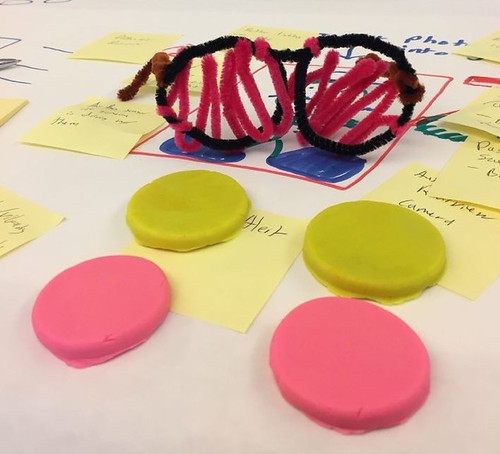This week in class our group of makers completed a design workshop hosted by Design for America at UIUC. Working in our project groups, we were able to work through a design process starting from basic guidelines and ultimately present a final mock prototype. Towards the end of our class, we also learned how to use Tinker Cad to design our group logo’s and print them at the end of class.
In the Harvard Business Review article “Design Thinking”, Tim Brown discusses the mindset needing for designing. In order to successfully design a product, you need to be able to design for a purpose that people would find useful. This mindset can be defined as “a methodology that imbues the full spectrum of innovation activities with a human-centered design ethos.” Brown attributes Thomas Edison’s success to being “able to envision how people would want to use what he made” and engineer toward that insight. In order create a successful design, you must have a specific problem or task at hand to which you are trying to solve. This allows the design to be more useful and applicable to consumers. Additionally, Dr. David Weightman, Professor of Industrial Design in the School of Art + Design says that a design must have desirability, viability, and feasibility. This means that a design must be human centered, it must be able to follow a business model, and it needs to be physically and technically possible. Personally, I think too many people try to come up with an idea and then find a market to sell it to. However, we now know that the process should be reversed. Determine the market, identify a problem, then create a solution.
In the Forbes article, “How to Use Design Thinking and Agility to Reach Product Development Breakthroughs”, Steven Widen says that often product teams fail to find a solution to their problems because “they never involved the end-consumer in the process. That’s where design thinking comes in.” Instead of looking at data or their own processes, designers need to “focus on the problem from the consumer’s perspective.” Designers should ask “Why?” at every step of their brainstorming process. In the business blog post, “Design thinking for a competitive advantage” published in the Times of India, Dr. Mayank Dhaundival says “Design thinking is a structured approach to finding innovative, out of the box solutions to multiple types of problems.” Rather than focusing on the problem, it focuses on the solution. Dhaundival continues to say that design thinking removes constraints until you can narrow down choices or ideas to fit the reality. Similar to what Brown says in “Design Thinking, Dhuandival says design thinking gives a lot of importance to prototyping, and that also of the rapid variety. The initial prototypes are not the well-made workshop prototypes but much more modest; the ones made by chart paper, tape, scissors and colour pens.” Again this is where 3D printing is advantageous. Once you have access to the proper equipment, there is a low cost of failure and it is possible to rapidly design and refine products for testing.
Although our workshop with Design for America had us create unrealistic products, the same concepts hold true. Before you can come up with a design, you need to have a specific population and a specific problem to solve in mind. As you design the product, it needs to be realistic and be able to be manufactured, and it needs to be profitable. Fortunately for us, our access to the Maker Lab and CU Fab Lab allows to rapidly design, create, and test prototypes. Regardless, It is important for us keep desirability, viability, and feasibility in mind throughout the entire process. Going forward, the readings and the workshop will guide our group, BCC Creation, in our semester project.




Hi Brain,
Awesome work! I like the sentence you wrote “Determine the market, identify a problem, then create a solution”. Your paper is quite comprehensive and almost touches every aspect of design thinking. The only factor I want to emphasize here is innovation. Design thinking is a revolutionary design methodology that requires the empathy from the designers on the customers. Understanding the true need of customers will inspire new ideas ignored by the designers who adopted traditional design method.
PS: I can’t see the picture at the top.
Best
Ben
Hi Brian,
Great reflection and thanks for the insight. I agree that, while the products we created in class were unrealistic, it was a great exercise in preparing us for how to ideate a product with an identifiable target market and specific problem that needs to be resolved. I also liked the articles you found, as they seem very relevant to this week’s class. Design thinking certainly helps an organization promote an advantage over other competitors who focus solely on being reactive as opposed to proactive.